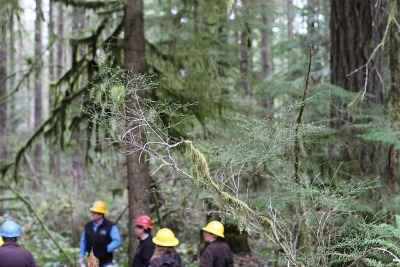
Why have a forest management plan? There are many reasons, but the most important is to help you achieve your objectives for your land. You may have many things you need or wish to achieve with your land, and a forest management plan will provide a road map for you to get there. Also, having a forest management plan for your property may be a requirement to participate in certain programs, such as property tax reduction programs, cost-share and incentive programs, and forest certification. Moreover, forest management plans can help in certain cases related to federal income taxes from sale of timber.
What Is in a Forest Management Plan?
Every forest management plan is unique. Each plan is tailored to the individual traits of both the property and the landowner. Also, a specific plan may need to include elements related to a program that pays for the plan or will use the plan to meet eligibility criteria. Still, all have some common elements. Oregon State University recently created a guide to the basics of forest management planning. It notes that good plans have these sections, at a minimum:
- property information, including the property location, size, ownership, history, and other details
- goals and objectives of the landowner
- maps and photos of the property
- a description of property resources, such as the trees and other plants, fish and wildlife, water, soils, and roads on the property, and their conditions, as applicable
- recommendations for future action, including steps that the landowner may take to achieve the goals and objectives
- financial and operations issues, such as tax, business, and liability matters
How Can I Get a Forest Management Plan?

Professional foresters have the knowledge and ability to write a forest management plan for you, with your input. Professional foresters include Cooperative Extension System foresters, foresters who work for the wood industry, private consulting foresters, and state agency foresters. State agency foresters usually work locally in your county or region and are employees of your state’s Department of Natural Resources or Forestry, Forestry Commission, Forest Service, or other state agency responsible for forest management and conservation.
In many cases, professional foresters charge a fee for their services, with costs depending on the size of the property or the complexity of the issues tackled in the plan. Public employees such as Cooperative Extension foresters or state agency foresters may offer certain services for a reduced rate. Also, in many states, there are opportunities to offset some or all of the costs through state or federal cost-sharing programs. For instance, the US Department of Agriculture’s Natural Resources Conservation Service offers funding in many states for “Conservation Activity Plan 106: Forest Management Plans.”
Plans may pay for themselves by helping you receive financial benefits, such as a reduction in property taxes. Property taxes are determined by your locality, but many states allow “current use value” property taxation, meaning that land is taxed under its value for forestry rather than its market value. For more information about your state, see the National Timber Tax Website’s Property Taxes page, or contact your local Cooperative Extension office. Also, a forest management plan may help document a “profit motive,” providing a step toward allowing you to deduct expenses for forest management from your federal income taxes. For more information, see the National Timber Tax Website’s Investment page, or contact your local Cooperative Extension office.
To locate a forester in your area, get information about having a forest management plan written for you, find a private consulting forester, or find out about cost-share and benefit programs in your area for forest management plans, contact your local Cooperative Extension or state natural resources/forestry agency office.
Related links:
Determining Your Objectives for a Forest Management Plan
Other resources:
Guide to Forest Management Planning (Oregon State University)
- property information
- goals and objectives
- maps and photos
- property resources
- recommendations for future action
- operations
Contributor
Greg Frey, Assistant Professor and Extension Specialist, Virginia State University
